News Articles
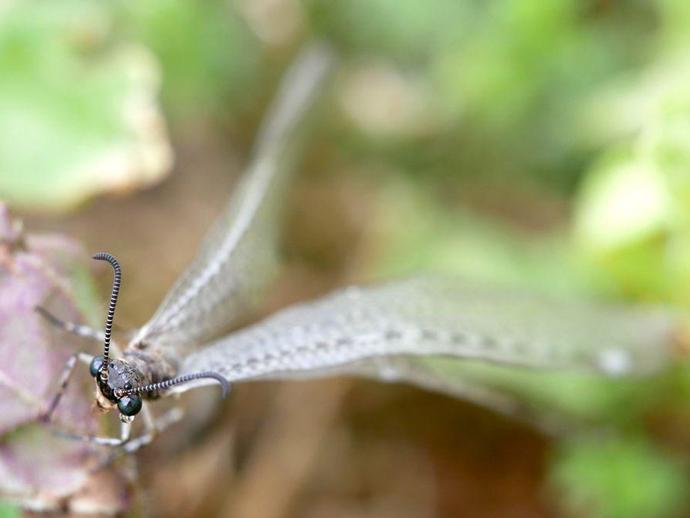
We're reaching into the archives for today's #BenInNature update presented by our friends at ...
February 28, 2021
We're reaching into the archives for today's #BenInNature update presented by our friends at Carter Bank & Trust! The following post was originally published on May 29, 2020. Yesterday we looked at the larval antlion (family Myrmeleontidae), often referred to as the "doodlebug," which makes its home at the bottom of a sandy pit and devours any unfortunate critters that fall inside. Today we're looking at the adult form of the antlion, which looks a little bit different than you might expect! When I found this adult antlion in my yard recently, I thought it was a damselfly; damselflies look similar to dragonflies, but they're generally smaller, skinnier, and fold their wings along their body when they're at rest instead ...
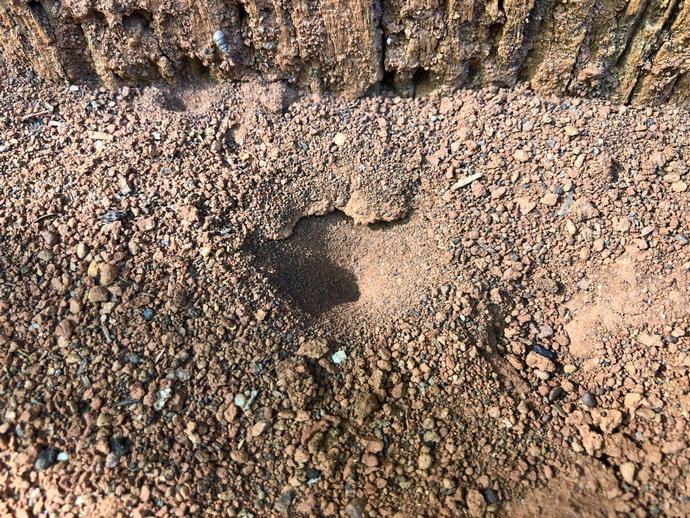
We're reaching into the archives for today's #BenInNature update presented by our friends at ...
February 27, 2021
We're reaching into the archives for today's #BenInNature update presented by our friends at Carter Bank & Trust! The following post was originally published on May 28, 2020. You've probably walked through an area with loose, sandy soil and noticed a strange little pit in the ground. Most folks refer to these as "doodlebugs," but the critter at the bottom of that little pit is a bit fiercer than that name would suggest. These pits are created by the larvae of antlions, a group of about 2,000 species belonging to the family Myrmeleontidae. Some species of antlion larvae live in leaf litter, but the "doodlebug" variety digs pits in the sand. The larva lies in wait at the bottom of the pit, concealed by the sandy soil. ...
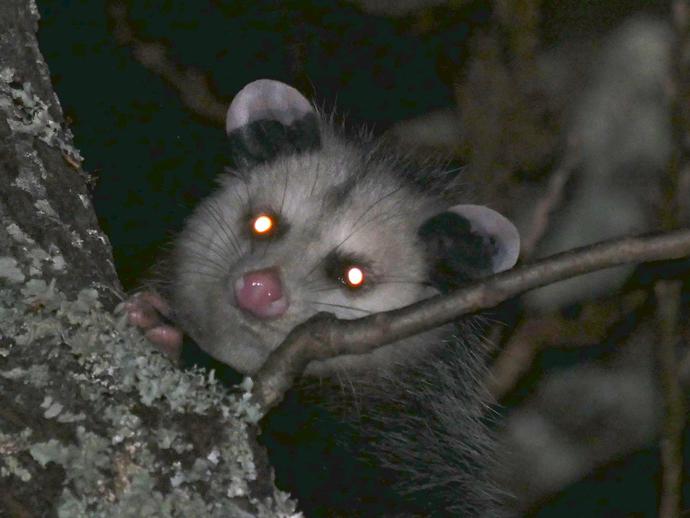
Ben here with the Friday edition of #BenInNature presented by our friends at Carter Bank & Trust!
February 26, 2021
Ben here with the Friday edition of #BenInNature presented by our friends at Carter Bank & Trust! Let's close out the week with one of my favorite animals of all time: Didelphis virginiana, the Virginia opossum! Typically just referred to as "possums," these little guys can be found in the eastern half of the U.S., the west coast of the U.S., and in Mexico and parts of Central America. They're marsupials, which means they carry their young in a pouch, and they're the only native marsupial in the U.S.! Female possums have between one and three litters of young per year with an average litter size of 8-9 babies. When they're first born, baby possums are about the size of honeybees! These tiny babies will crawl into the ...
The museum's resident painted turtle ...
February 25, 2021
The museum's resident painted turtle, Sheldon, is the center of attention in this week's episode of "Museum Minute"! Sheldon, who has become a star by appearing in many educational programs over the years, can be found by visitors to the museum inside the Suzanne M. Lacy Education Center. ABOUT MUSEUM MINUTE The Virginia Museum of Natural History has a spectacular assortment of displays within its exhibit galleries! Some displays are unforgettable, while others don't always get the attention they deserve. Through the original series "Museum Minute", museum educators highlight various displays throughout the exhibit galleries, while providing intriguing facts you may not have known. "Museum Minute" is made possible thanks ...
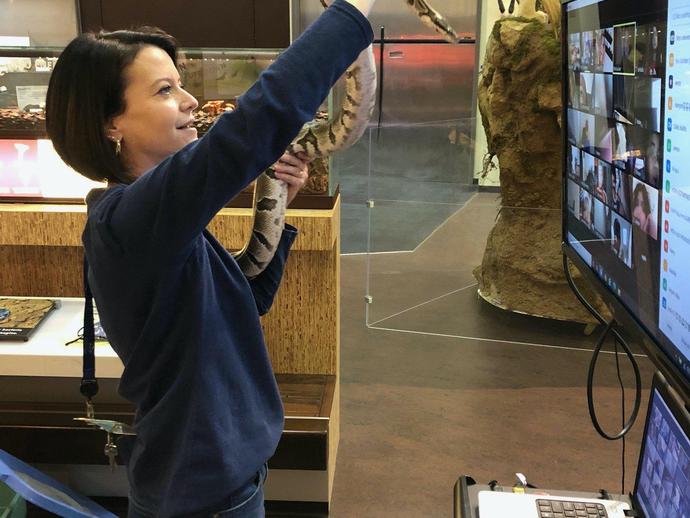
Since last Friday ...
February 25, 2021
Since last Friday, museum educators have had a blast providing a variety of distance learning programs for students of each grade level from Rich Acres Elementary School in Henry County! Today, 2nd and 3rd graders participated in the "Circle of Life" program, in which they investigated the relationships among organisms by looking at examples of producers, consumers, and decomposers to understand the transfer of energy that occurs among all living things and the fundamental processes it fuels. Last Friday, 4th and 5th graders took part in the "Earth as We Know it" program. With models and demonstrations, students made connections between how the energy trapped inside the earth has moved continents and has shaped the ...
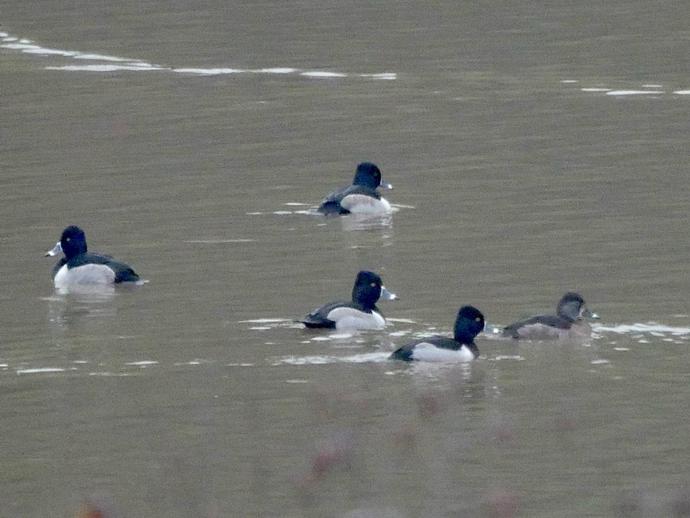
Ben here with the Thursday edition of #BenInNature presented by our friends at Carter Bank & ...
February 25, 2021
Ben here with the Thursday edition of #BenInNature presented by our friends at Carter Bank & Trust! Here's another sighting from December's VMNH Christmas Bird Count: Aythya collaris, the ring-necked duck! You might wonder why these ducks are called "ring-necked" when there do not appear to be any rings around their necks. In fact, there is a very faint cinnamon ring that is difficult to observe in anything but the best lighting (which was not the case when I took this picture early in the morning). There is, however, a bright white ring surrounding the male's bill, so maybe they should have been called ring-billed ducks. These ducks breed in Canada and travel to the southern U.S. and Mexico for the winter, although ...
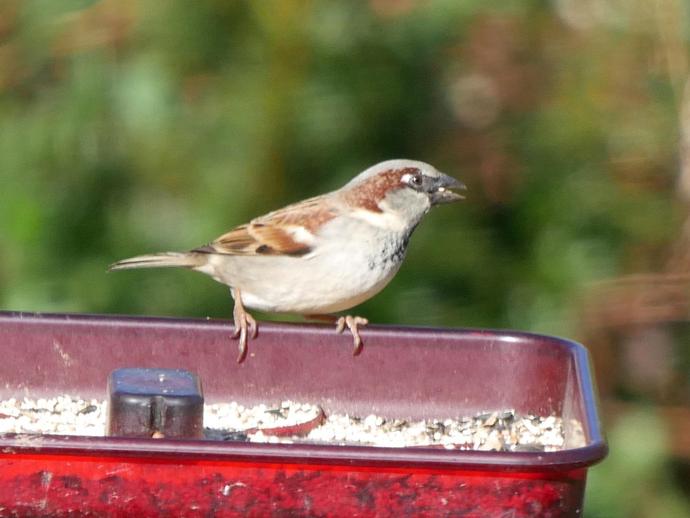
Ben here with today's edition of #BenInNature presented by our friends at Carter Bank & Trust!
February 24, 2021
Ben here with today's edition of #BenInNature presented by our friends at Carter Bank & Trust! The house sparrow (Passer domesticus) is a common sight throughout the U.S. -- so much so that you might be surprised to learn that it's not native to the U.S.! Believe it or not, this little guy is the single most widely distributed wild bird on the entire planet! House sparrows are native to the Middle East, Europe, and Asia, but through a combination of deliberate introductions and natural dispersal, they can be found in most of North America, Central America, southern South America, parts of Africa, Australia, and New Zealand, among many other locations. Why are house sparrows so successful? One of the main reasons is ...
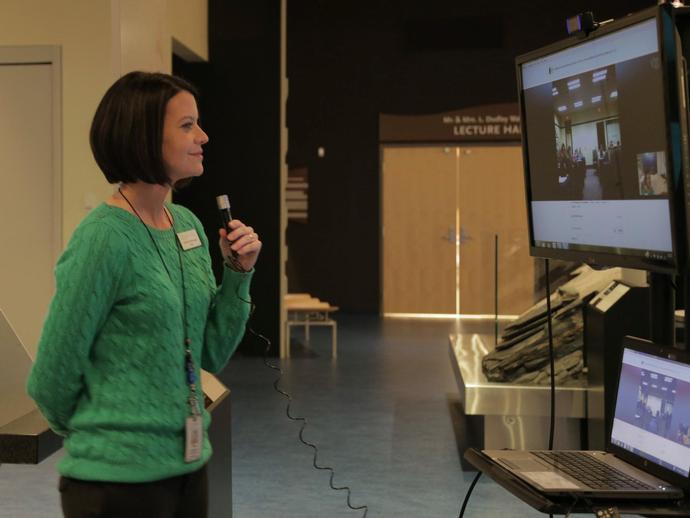
The Virginia Museum of Natural History and Boxley Materials Company have announced a partnership ...
February 24, 2021
The Virginia Museum of Natural History and Boxley Materials Company have announced a partnership in support of the museum's virtual education offerings throughout 2021 and 2022! Through a $10,000 gift from Boxley to the VMNH Foundation, the museum will be better positioned to market and deliver a combination of STEM educational programs led by VMNH educators and scientists, with various programs delivered to schools, families and general social media audiences. Learn more about this partnership and the programs it supports at: www.vmnh.net/education/virtual-education/2021-22-virtual-education-partnership!
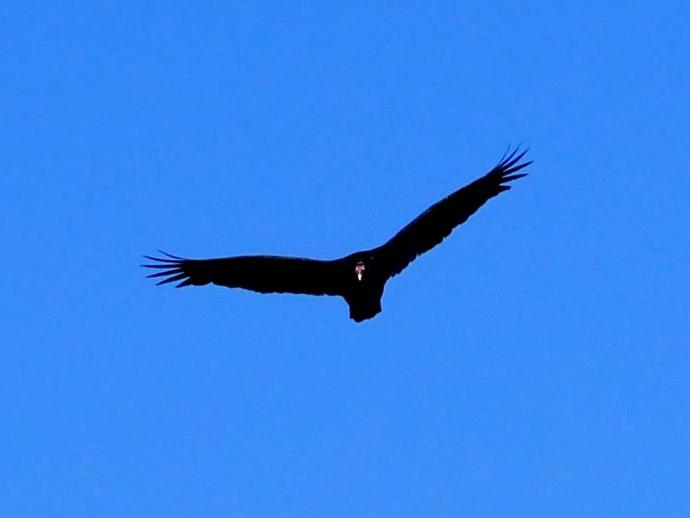
Ben here with the Tuesday edition of #BenInNature presented by our friends at Carter Bank & Trust!
February 23, 2021
Ben here with the Tuesday edition of #BenInNature presented by our friends at Carter Bank & Trust! The turkey vulture (Cathartes aura) is not exactly one of the most beloved birds out there. In fact, they have some pretty gross habits, so you might want to hold off on reading this one until after lunch. However, these birds play a critical role in nature, and if we didn't have them around, we would definitely miss them! So why don't people like turkey vultures? First and foremost, folks probably wouldn't be crazy about seeing bluebirds if they only showed up to eat dead things. Turkey vultures are carrion feeders, preferring to eat meat that's fairly fresh. They fly low over the ground and can smell a compound called ...
"We asked our friends at the Virginia Museum of Natural History in Martinsville to spotlight ...
February 22, 2021
"We asked our friends at the Virginia Museum of Natural History in Martinsville to spotlight something fascinating about our state. All hail nature's headbangers!"
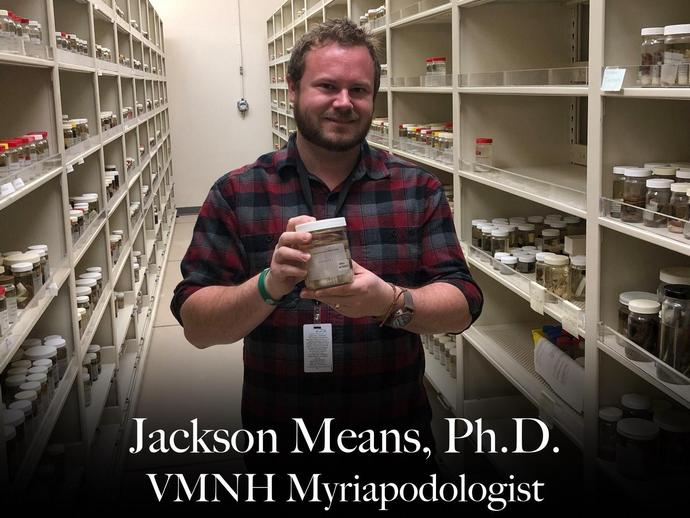
Want to learn more about the world of millipedes, centipedes, and relatives?
February 22, 2021
Want to learn more about the world of millipedes, centipedes, and relatives? Our friends at the Dan River Basin Association have you covered! VMNH Myriapodologist Dr. Jackson Means will present "The Many-Legged Beneath our Feet: Myriapods of the Piedmont Region" this Wednesday (February 24) at noon during the Association's "Lunch with DRBA Webinar"! Registration is still open, but space is limited. Pre-registration is required to attend. During this webinar, Dr. Means will introduce participants to the often overlooked world of the Myriapoda (millipedes, centipedes, and relatives). Jackson will discuss what exactly myriapods are, their role in the ecosystem, and why they are so diverse (>16,000 species; about as many ...
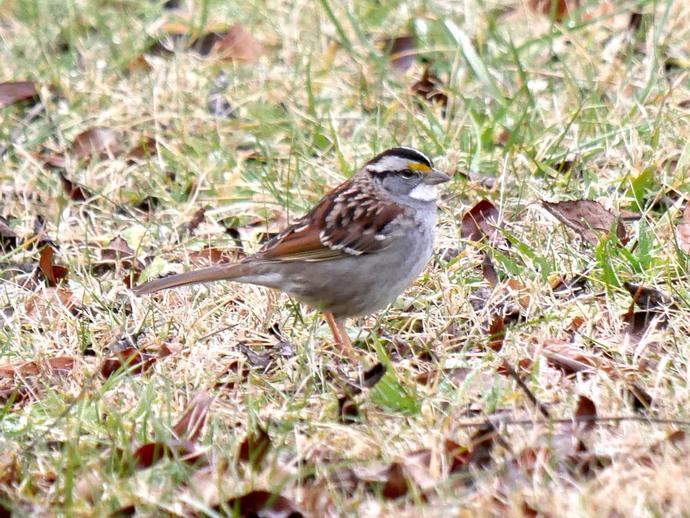
It's time for today's #BenInNature update presented by our friends at Carter Bank & Trust!
February 22, 2021
It's time for today's #BenInNature update presented by our friends at Carter Bank & Trust! White-throated sparrows (Zonotrichia albicollis) made the news just last year when National Geographic reported a pretty fascinating development. Over the past 20 years, white throated sparrows have begun dumping their old song and replacing it with a new one! While they used to have a three-note call, most of these sparrows have replaced it with a two-note call. While bird calls slowly evolve over time, this rapid switch is unprecedented according to ornithologists. Why did the switch happen? No one knows for certain. Maybe they just prefer playing stuff off the new album! If you'd like to hear the sparrows' hot new track, you're ...
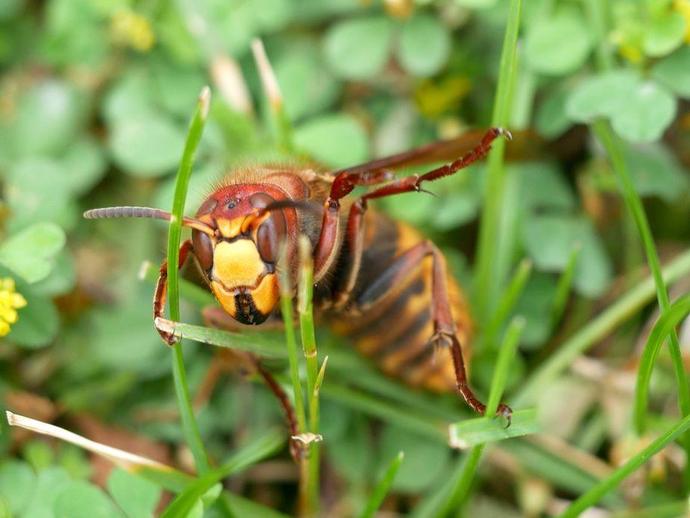
We're reaching into the archives for today's #BenInNature update presented by our friends at ...
February 21, 2021
We're reaching into the archives for today's #BenInNature update presented by our friends at Carter Bank & Trust! The following post was originally published on May 27, 2020. The European hornet (Vespa crabro) is one of the larger hornets that you're likely to find in Virginia, and I'd wager a whole lot of them have been squished over the last month or so due to their resemblance to the Asian giant hornet (Vespa mandarinia). While you're probably getting tired of hearing me say it, the Asian giant hornet (the so-called "murder hornet") is not in Virginia, and the only evidence that it's in the U.S. at all is two dead specimens found in Washington state back in December. Of course, both species are related since they're ...
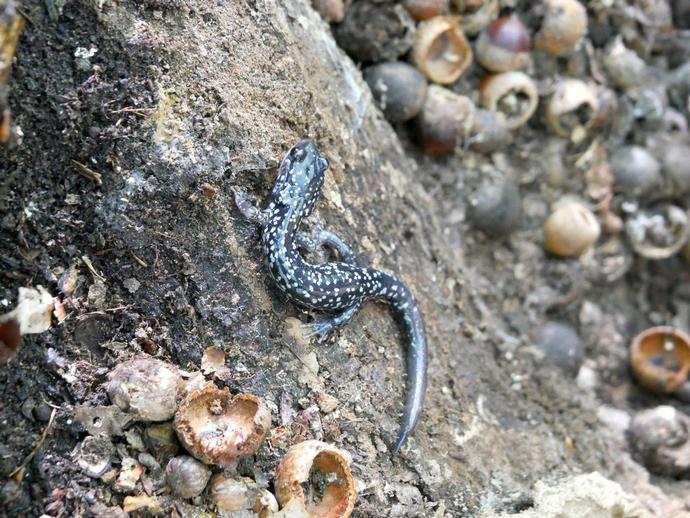
We're reaching into the archives for today's #BenInNature update presented by our friends at ...
February 20, 2021
We're reaching into the archives for today's #BenInNature update presented by our friends at Carter Bank & Trust! The following post was originally published on May 26, 2020. The white-spotted slimy salamander (Plethodon cylindraceus) is one of Virginia's more common salamanders, and it can be found throughout the Piedmont all the way down to the northern part of South Carolina. I've probably found at least 20 of these little guys in the woods around my house over the last few months, usually hiding beneath rocks. Generally speaking, you should never touch a salamander because they have very absorbent skin; many salamanders respire (breathe) through their skin. The salts and oils on our hands (not to mention perfumes, ...
The largest species of cat in the world takes center stage in this latest episode of "Museum ...
February 19, 2021
The largest species of cat in the world takes center stage in this latest episode of "Museum Minute"! ABOUT MUSEUM MINUTE The Virginia Museum of Natural History has a spectacular assortment of displays within its exhibit galleries! Some displays are unforgettable, while others don't always get the attention they deserve. Through the original series "Museum Minute", museum educators highlight various displays throughout the exhibit galleries, while providing intriguing facts you may not have known. "Museum Minute" is made possible thanks to VMNH Corporate Partner Carter Bank & Trust (www.cbtcares.com)!
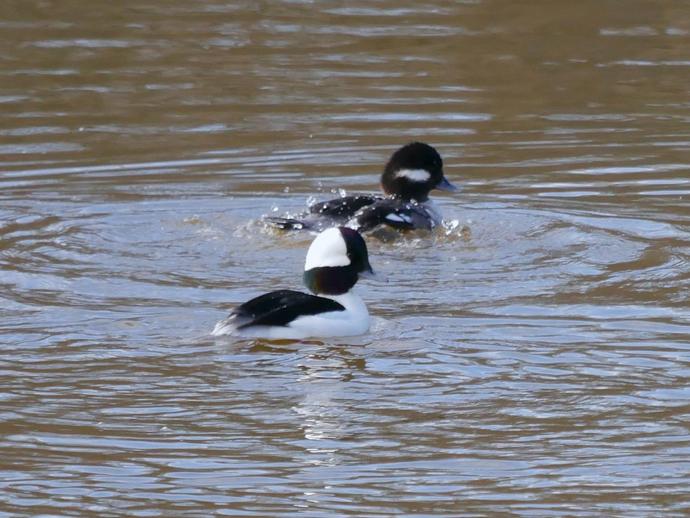
It's time for today's #BenInNature update presented by our friends at Carter Bank & Trust!
February 19, 2021
It's time for today's #BenInNature update presented by our friends at Carter Bank & Trust! Let's close out the week with another photo from December's VMNH Christmas Bird Count: a pair of buffleheads (Bucephala albeola)! Buffleheads are small sea ducks, and like many ducks, they're sexually dimorphic, meaning the males and females look quite different from one another. In this photo, the bufflehead in the foreground is a male, while the one behind it is a female. These beautiful ducks spend their winters in the contiguous U.S., and during breeding season, they can be found at wooded lakes and ponds in Alaska and Canada. They build their nests in trees, mostly inside cavities excavated by the woodpecker known as the ...

Perseverance has landed! Science makes America great! What a day
February 18, 2021
Perseverance has landed! Science makes America great! What a day...
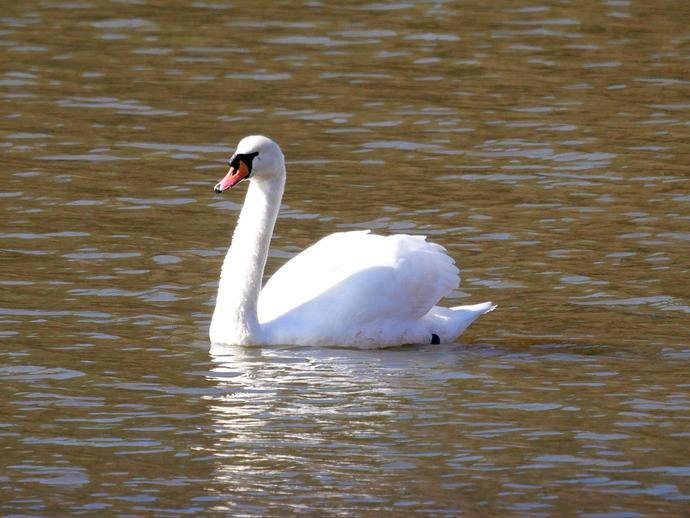
It's time for the Thursday edition of #BenInNature presented by our friends at Carter Bank & ...
February 18, 2021
It's time for the Thursday edition of #BenInNature presented by our friends at Carter Bank & Trust! Here's another photo from December's VMNH Christmas Bird Count: a mute swan (Cygnus olor)! Mute swans get their common name because they're much less vocal than other swan species, although they do still communicate with one another through grunts and whistles (just like some people I know!). They're native to temperate Europe and much of the Palearctic, which consists of the northern portions of Europe and Asia. However, they're also quite a common sight in North America as they've been introduced all over the U.S. and breed prolifically enough to be considered an invasive species. These swans feed mostly on vegetation, ...
Today's the day!
February 18, 2021
Today's the day! NASA's Mars 2020 Perseverance rover, with the Ingenuity Mars Helicopter attached to its belly, is on target to touch down gently on the Red Planet around 3:55 p.m. EST! To celebrate this historic event, NASA is providing the world with a live landing commentary show starting at 2:15 p.m. EST today. We'll be watching and hope you will, too! Over the past two decades, missions flown by NASA's Mars Exploration Program have shown us that Mars was once very different from the cold, dry planet it is today. Evidence discovered by landed and orbital missions point to wet conditions billions of years ago. These environments lasted long enough to potentially support the development of microbial life. The Mars 2020 ...
It's time for another episode of "Tales of Ancient Life" presented by Carter Bank & Trust!
February 17, 2021
It's time for another episode of "Tales of Ancient Life" presented by Carter Bank & Trust! In this episode, Assistant Curator of Paleontology Dr. Adam Pritchard focuses on the discovery of a carnivorous dinosaur even larger than T. rex! For the younger viewers, be sure to watch until the end, as Dr. Pritchard provides a fun assignment that you can complete!
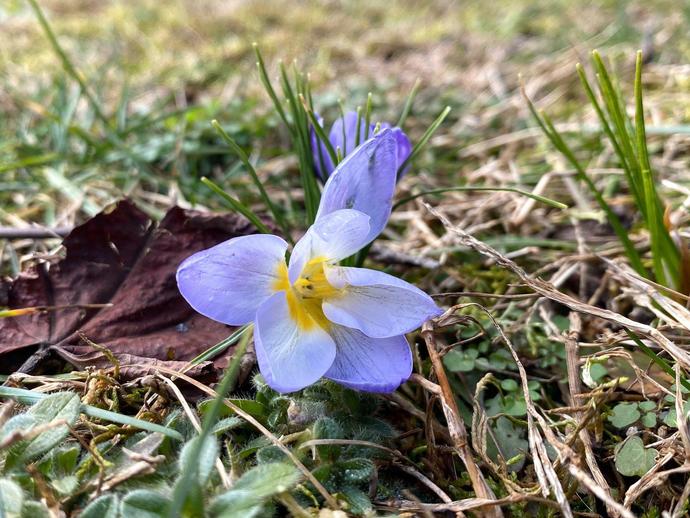
Ben here with today's #BenInNature update presented by our friends at Carter Bank & Trust!
February 17, 2021
Ben here with today's #BenInNature update presented by our friends at Carter Bank & Trust! Even though everything seems to be getting covered in ice once a week right now, there are a few plants that are managing to thrive, such as this crocus I spotted in my front yard yesterday morning! Crocuses are a genus of perennial flowering plants in the iris family, and there are about 90 different species. They grow from corms, which are basically thick underground plant stems that store energy to help plants survive harsh conditions. Corms are not quite the same thing as bulbs; the way to tell the difference is that if you cut a corm in half, it appears to be constructed of a solid layer of plant tissue, but if you cut a bulb ...
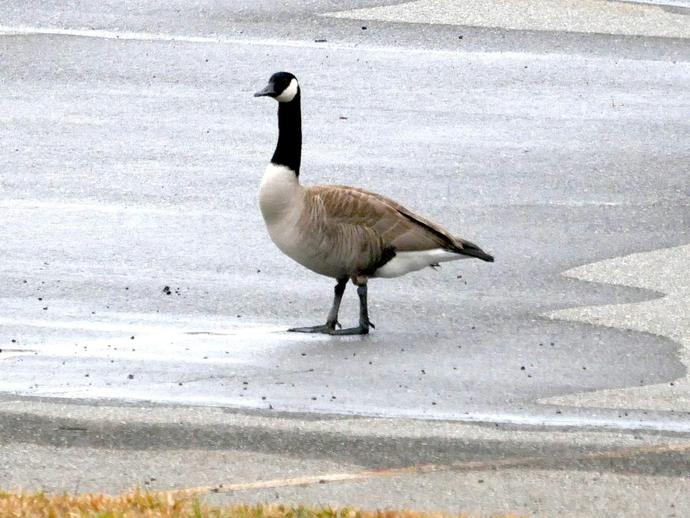
Ben here with the Tuesday edition of #BenInNature presented by our friends at Carter Bank & Trust!
February 16, 2021
Ben here with the Tuesday edition of #BenInNature presented by our friends at Carter Bank & Trust! Here's a photo I snapped back in December when museum staff were conducting the 2020 Christmas Bird Count in Martinsville! The Canada goose (Branta canadensis) is both distinctive and common, making it a pretty easy bird to spot. Canada geese spend their summers in Canada and migrate to the U.S. for the winter, although there are plenty of places where they stick around year-round. For many people in recent decades, Canada geese have become a bit of a pest. Anyone who lives near Canada geese will tell you that their droppings are a major nuisance, not to mention their loud honking and confrontational behavior. Part of the ...
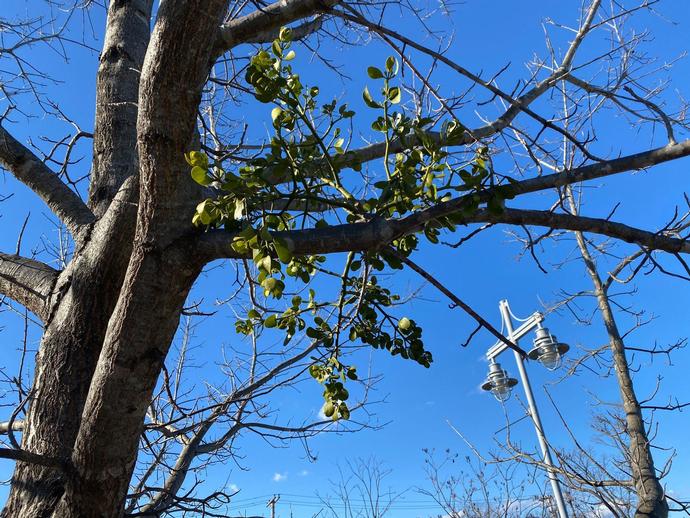
Ben here with Monday's edition of #BenInNature presented by our friends at Carter Bank & Trust!
February 15, 2021
Ben here with Monday's edition of #BenInNature presented by our friends at Carter Bank & Trust! Back around Christmas, I spent a fair amount of time stomping through the woods around my family property trying to find American mistletoe (Phoradendron leucarpum). While there apparently isn't a speck of mistletoe anywhere on my property, I was fortunate to find a very nice example on a tree right in the VMNH parking lot! Mistletoe is an unusual plant and winter is the best time to spot it; if you see a big mass of green hanging from the branches of an otherwise bare deciduous tree, you've likely spotted some mistletoe. It is what's known as a "hemi-parasitic" plant, meaning that it draws water and nutrients from a host ...
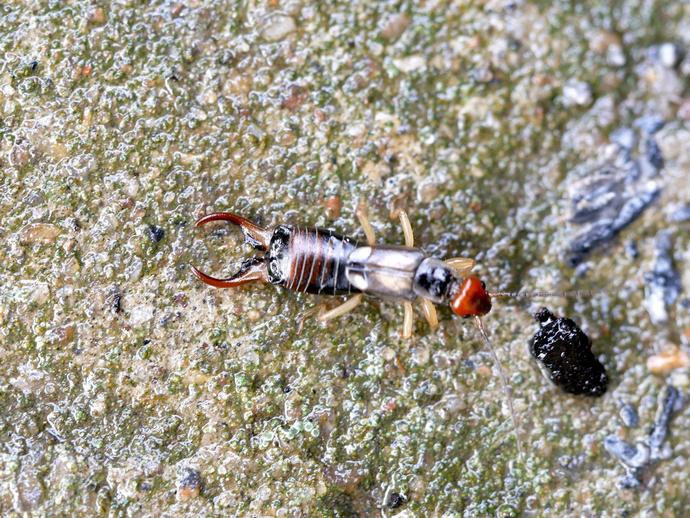
We're reaching into the archives for today's #BenInNature update presented by our friends at ...
February 14, 2021
We're reaching into the archives for today's #BenInNature update presented by our friends at Carter Bank & Trust! The following post was originally published on May 25, 2020. Who doesn't love earwigs? ... all right, so very few people love earwigs, but they're victims of bad PR. For example, earwigs have no special interest in crawling inside your ear, and contrary to many old wives' tales, they definitely won't lay eggs in there. They're actually called "earwigs" because when their small wings are unfolded, they sort of resemble a human ear! The most prominent feature of the earwig is the pincers extending from its abdomen. These pincers are an easy way to tell the difference between male and female earwigs: males ...

MUSEUM CLOSED SATURDAY ...
February 13, 2021
MUSEUM CLOSED SATURDAY, FEBRUARY 13 Please note that due to a current power outage and the icy conditions, the museum is now closed. We greatly apologize for this inconvenience.
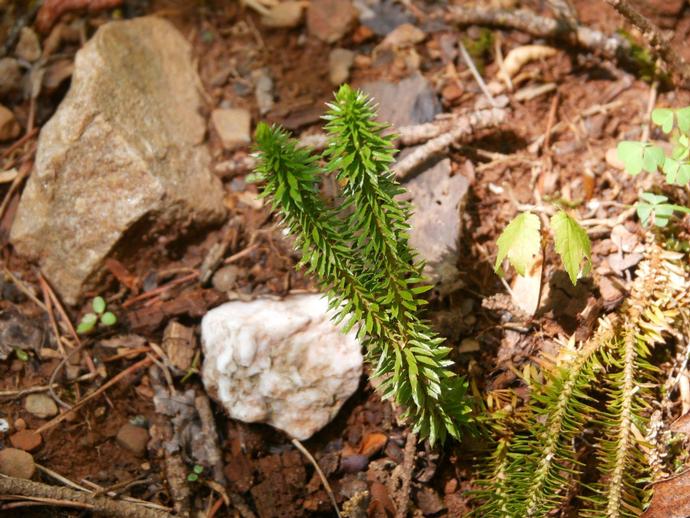
We're reaching into the archives for today's #BenInNature update presented by our friends at ...
February 13, 2021
We're reaching into the archives for today's #BenInNature update presented by our friends at Carter Bank & Trust! The following post was originally published on May 24, 2020. Awhile back, we posted Diphasiastrum digitatum, better known as ground cedar or running cedar, which is a plant belonging to the ancient family Lycopodiaceae. However, ground cedar isn't the only lycopod you're liable to find in the woods in southwest Virginia; you might also spot Huperzia lucidula, also known as shining firmoss or shining clubmoss. Lycopods date back to the early Devonian, about 380 million years ago, and they're unusual in that they do not produce flowers or seeds; instead they produce spores, sort of like a fungus! Huperzia ...
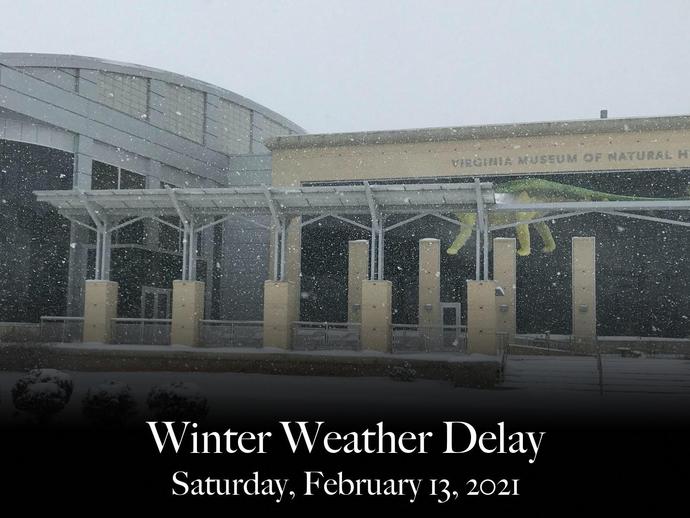
Please note that the museum will delay its opening until 10 a
February 12, 2021
Please note that the museum will delay its opening until 10 a.m. on Saturday, February 13 due to the forecasted icy weather conditions. Please also note that additional delays or closings may need to be issued at any time depending on weather conditions. Please confirm hours of operation before traveling to the museum by going to www.vmnh.net. Thank you and stay warm!
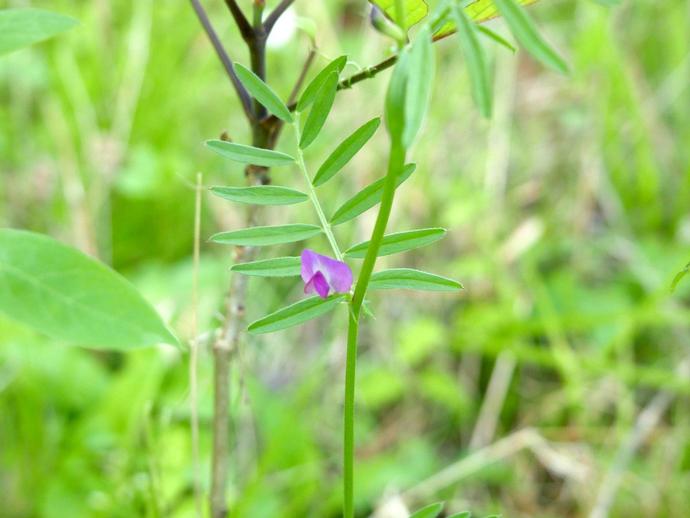
Ben is away from the museum this week ...
February 12, 2021
Ben is away from the museum this week, so we're reaching into the archives for today's #BenInNature update presented by our friends at Carter Bank & Trust! The following post was originally published on May 23, 2020. If you've walked through any fields lately, you've almost certainly seen this plant and its small violet flowers. This is common vetch (Vicia sativa), which belongs to the legume family (Fabaceae) alongside peanuts, soybeans, peas and many others. People often grow common vetch as a livestock fodder, and horses and cattle prefer it over grasses or clover. Livestock aren't the only ones to get in on the action; humans can eat common vetch, too! The young shoots can be cooked and taste a bit like spinach or ...
Giant beavers in Virginia?
February 11, 2021
Giant beavers in Virginia? During the last Ice Age, Virginia was home to beavers that grew to over 200 pounds - about 4 times larger than modern beavers! Learn more about these now extinct animals in this latest episode of "Museum Minute"! ABOUT MUSEUM MINUTE The Virginia Museum of Natural History has a spectacular assortment of displays within its exhibit galleries! Some displays are unforgettable, while others don't always get the attention they deserve. Through the original series "Museum Minute", museum educators highlight various displays throughout the exhibit galleries, while providing intriguing facts you may not have known. "Museum Minute" is made possible thanks to VMNH Corporate Partner Carter Bank & Trust! ...
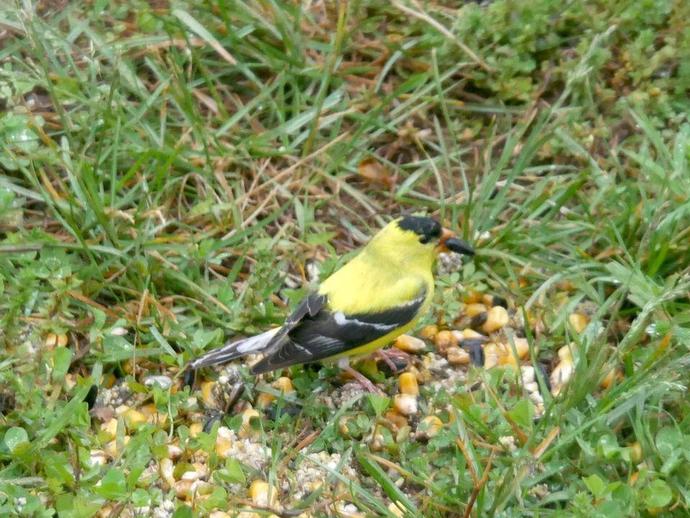
Ben is away from the museum this week ...
February 11, 2021
Ben is away from the museum this week, so we're reaching into the archives for today's #BenInNature update presented by our friends at Carter Bank & Trust! The following post was originally published on May 22, 2020. The American goldfinch (Spinus tristis) is always a welcome sight at the birdfeeder. Both of the goldfinches pictured here are males, as they have vibrant yellow feathers and a black cap; the females are a duller yellowish-brown color and lack the black cap. American goldfinches are migratory birds, and during their breeding season, they can be found from North Carolina all the way up to Canada. During the winter, the birds at the northernmost part of the range will migrate south of the U.S./Canadian border ...
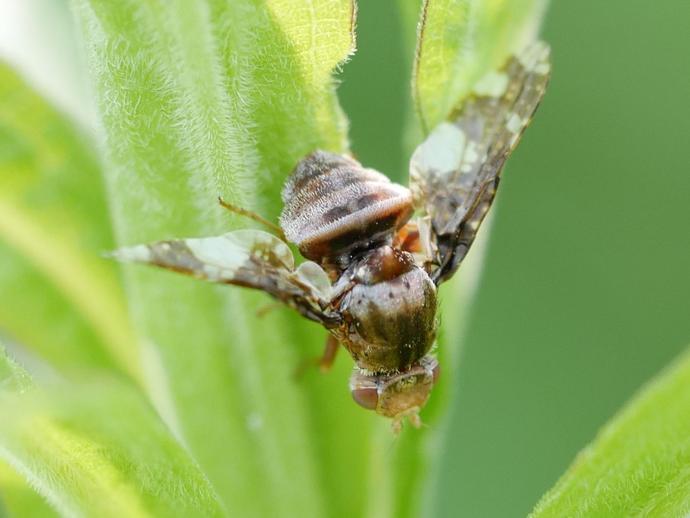
Ben is away from the museum this week ...
February 10, 2021
Ben is away from the museum this week, so we're reaching into the archives for today's #BenInNature update presented by our friends at Carter Bank & Trust! The following post was originally published on May 21, 2020. Pop quiz: What does the goldenrod gall fly (Eurosta solidaginis) have in common with your car? The answer: They both contain antifreeze! (Also, I guess they both have at least one antenna.) These small flies can be found across the U.S., generally in the vicinity of goldenrod plants. They lay their eggs near the new buds of a goldenrod, and when the eggs hatch, the larvae crawl below the bud and induce the plant to form a gall (a hard chamber made of plant tissue) around themselves. They stay inside the gall ...
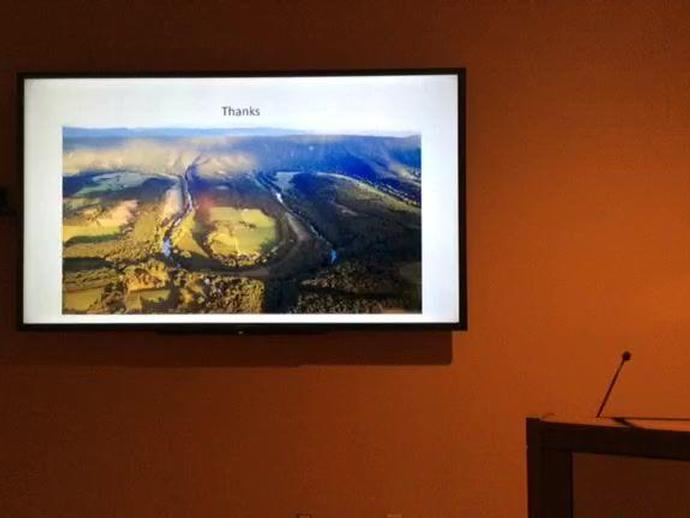
Q&A from "Geology of the Shenandoah Valley: How geological forces shaped the features of the ...
February 9, 2021
Q&A from "Geology of the Shenandoah Valley: How geological forces shaped the features of the Blue Ridge and our valley" presented by Dr. Jim Beard VMNH Curator Emeritus of Earth Sciences
"Geology of the Shenandoah Valley: How geological forces shaped the features of the Blue Ridge ...
February 9, 2021
"Geology of the Shenandoah Valley: How geological forces shaped the features of the Blue Ridge and our valley" presented by Dr. Jim Beard VMNH Curator Emeritus of Earth Sciences
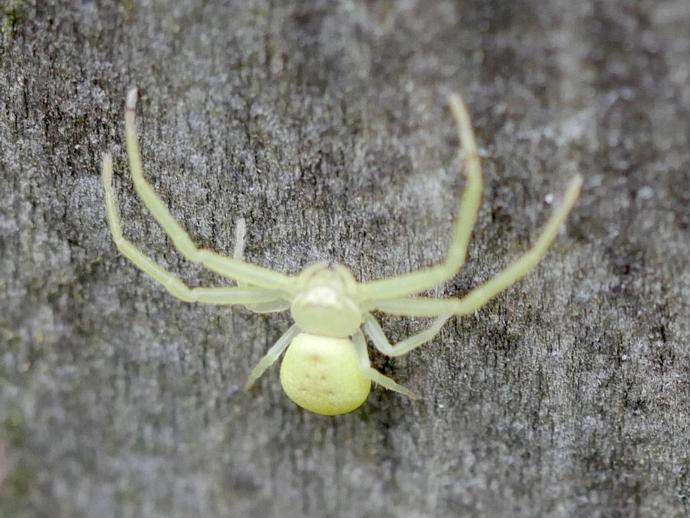
Ben is away from the museum this week ...
February 9, 2021
Ben is away from the museum this week, so we're reaching into the archives for today's #BenInNature update presented by our friends at Carter Bank & Trust! The following post was originally published on May 20, 2020. There are several animals famous for being able to change color, such as the chameleon or the octopus. Did you know that some spiders can change color, too? This is a small female Misumena vatia, commonly called the goldenrod crab spider. As the name suggests, these spiders commonly hunt for prey in sprays of goldenrod flowers. However, they're not exclusive to goldenrods, and sometimes they'll hunt on white flowers; depending on the flower, they can change color from yellow to white! Unlike a lot of ...
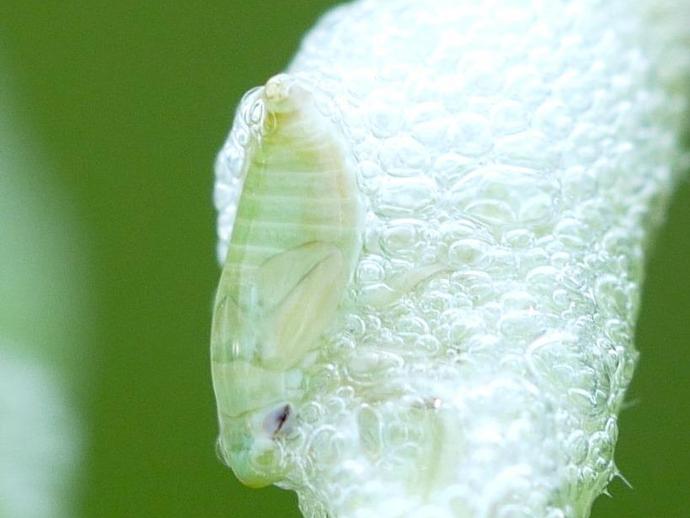
Ben is away from the museum this week ...
February 8, 2021
Ben is away from the museum this week, so we're reaching into the archives for today's #BenInNature update presented by our friends at Carter Bank & Trust! The following post was originally published on May 19, 2020. Have you ever been walking through tall grass and seen a mass of white foam clinging to a stalk? That's the work of the spittle bug, an insect belonging to the superfamily Cercopoidea. The nymphs of this family have an unusual habit; while they're feeding on plant juices that flow up from the roots and through the plant's xylem, they excrete liquid and use special breathing tubes to inject bubbles into the fluid, forming a foamy mass around the insect. This foam has a variety of benefits. It conceals the ...
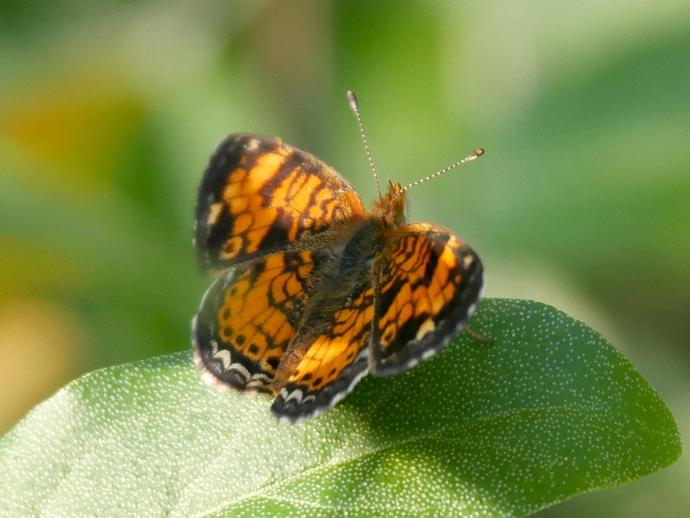
We're reaching into the archives for today's #BenInNature update presented by our friends at ...
February 7, 2021
We're reaching into the archives for today's #BenInNature update presented by our friends at Carter Bank & Trust! The following post was originally published on May 17, 2020. The pearl crescent butterfly (Phyciodes tharos) is one of the most widespread butterflies in North America. It can be found everywhere in the U.S. except for the west coast, and it can also be found throughout Mexico and in southern Canada. These little butterflies like to spend their time in open areas and can often be spotted in pastures, fields, open pine woods, and road edges. In the northern part of their range, they can usually be found from April through November, and they can be found year-round in the southern U.S. and Mexico. These ...
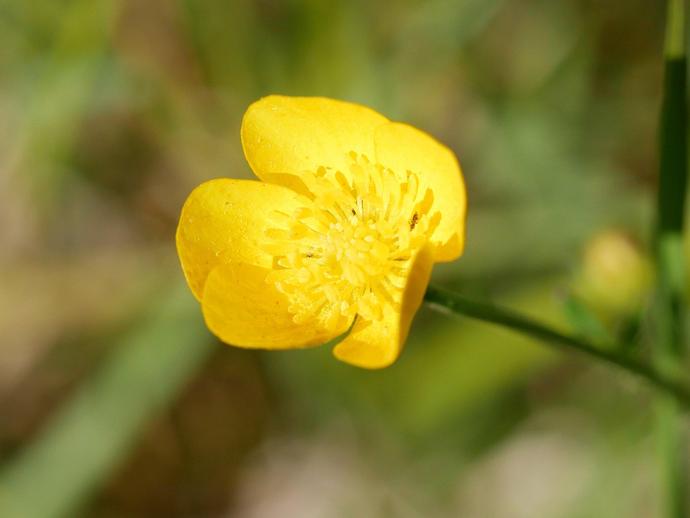
We're reaching into the archives for today's #BenInNature update presented by our friends at ...
February 6, 2021
We're reaching into the archives for today's #BenInNature update presented by our friends at Carter Bank & Trust! The following post was originally published on May 16, 2020. There are many different species of buttercups, all belonging to the genus Ranunculus. "Ranunculus" is Latin for "little frog," and it likely got its name because these plants tend to grow near water and in poorly-draining soil. Buttercups have a tendency to pop up in pastureland, which is potentially dangerous as all species within the genus are poisonous. Fortunately, livestock tend to avoid them unless they're truly desperate for food. Perhaps the neatest feature of the buttercup is that the flowers are highly reflective! The upper surface of ...
It's all about food chains in this week's edition of "Musum Minute" ...
February 5, 2021
It's all about food chains in this week's edition of "Musum Minute", with a focus on the museum's lion and buffalo display located inside the Lee & George W. Lester, II How Nature Works gallery! ABOUT MUSEUM MINUTE The Virginia Museum of Natural History has a spectacular assortment of displays within its exhibit galleries! Some displays are unforgettable, while others don't always get the attention they deserve. Through the original series "Museum Minute", museum educators highlight various displays throughout the exhibit galleries, while providing intriguing facts you may not have known. "Museum Minute" is made possible thanks to VMNH Corporate Partner Carter Bank & Trust! (www.cbtcares.com)!
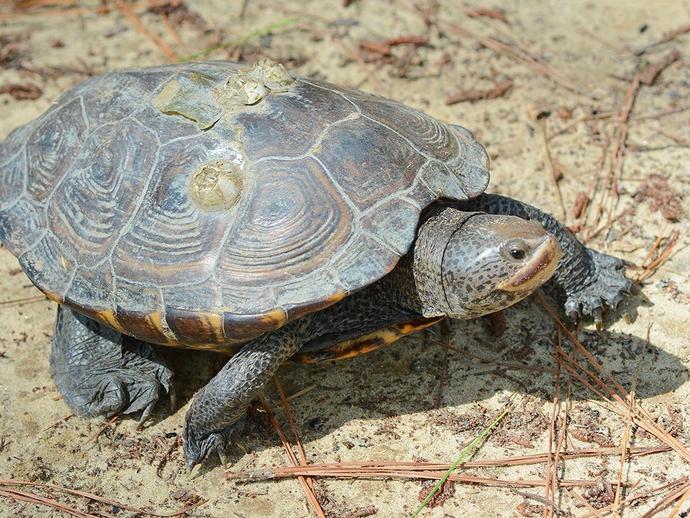
Ben here with the Friday edition of #BenInNature presented by our friends at Carter Bank & Trust!
February 5, 2021
Ben here with the Friday edition of #BenInNature presented by our friends at Carter Bank & Trust! We're closing out Herp Month (for real this time!) with our number one pick for Virginia's rarest turtle: Malaclemys terrapin terrapin, the eastern diamond-backed terrapin! You might wonder what makes a turtle a terrapin (beyond an affinity for the Grateful Dead). The name is derived from the Algonquian word "torope," and was used by early European settlers to describe turtles that live in brackish waters. That ability is what makes this critter so unique; while most aquatic turtles either live in freshwater or saltwater, the diamond-backed terrapin splits the difference! While they're normally found in brackish water, they ...
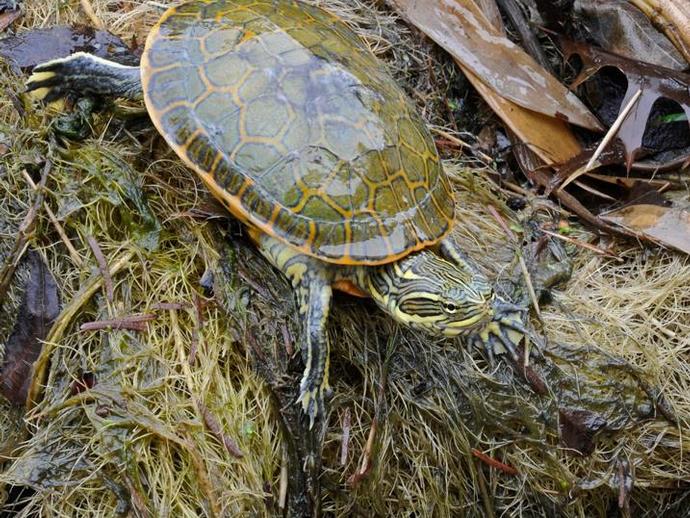
Ben here with the Thursday edition of #BenInNature presented by our friends at Carter Bank & ...
February 4, 2021
Ben here with the Thursday edition of #BenInNature presented by our friends at Carter Bank & Trust! Behold our number two pick for Virginia's rarest turtle: Deirochelys reticularia reticularia, the eastern chicken turtle! The eastern chicken turtle is one of three recognized subspecies of chicken turtle; the other two are the Florida chicken turtle and the western chicken turtle. You might be wondering how they get their unusual name. Unfortunately, it's because ... well ... you know the old joke about how something "tastes like chicken?" Apparently these guys used to be a big hit at the dinner table. Chicken turtles are found in the southeastern U.S. Coastal Plain, and in some parts of their range -- South Carolina, ...
Assistant Curator of Paleontology Dr
February 3, 2021
Assistant Curator of Paleontology Dr. Adam Pritchard presents "The Tale of the Jurassic Shark" in this latest episode of "Tales of Ancient Life" presented by Carter Bank & Trust!
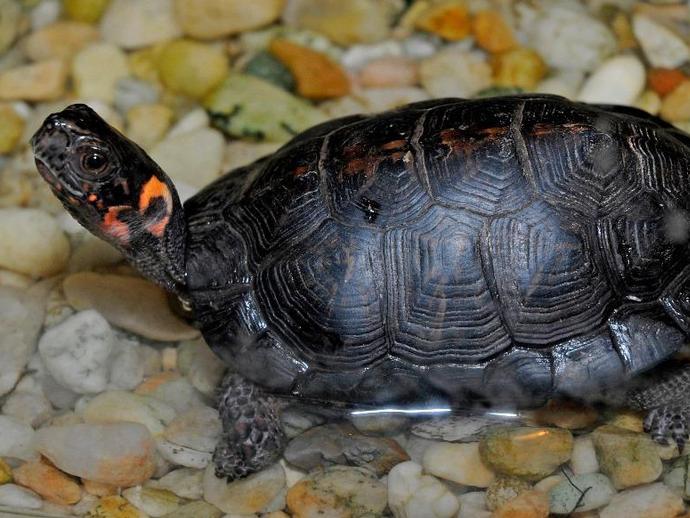
Ben here with today's edition of #BenInNature presented by our friends at Carter Bank & Trust!
February 3, 2021
Ben here with today's edition of #BenInNature presented by our friends at Carter Bank & Trust! Here's our pick for Virginia's third rarest turtle: Glyptemys muhlenbergii, the bog turtle! Bog turtles are quite unique in a variety of ways. For one, they're North America's smallest turtle, averaging just three to three and a half inches in length. They live in small colonies of about 20 individuals. They also have an unusual distribution that's broadly divided into a northern population and a southern population; the larger northern population occurs in parts of New England, while the smaller southern population occurs in a band that stretches from southwest Virginia down through North Carolina, South Carolina, Georgia, and ...
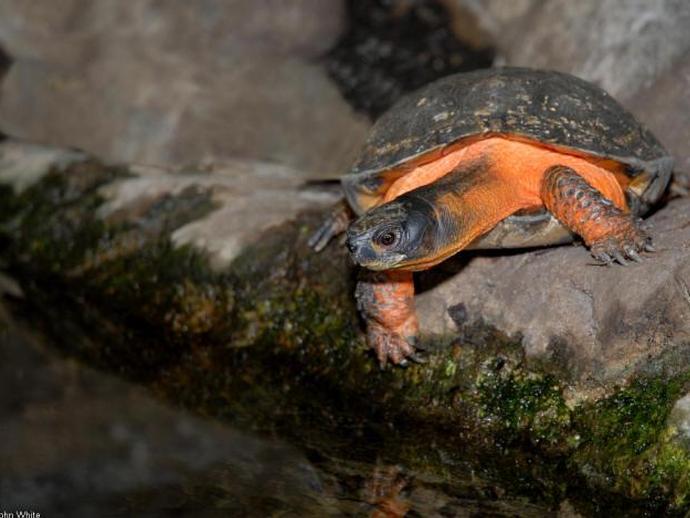
Ben here with Tuesday's edition of #BenInNature presented by our friends at Carter Bank & Trust!
February 2, 2021
Ben here with Tuesday's edition of #BenInNature presented by our friends at Carter Bank & Trust! Here's our pick for Virginia's fourth rarest species of turtle: Glyptemys insculpta, the wood turtle! The wood turtle can be found in many New England states and parts of southeastern Canada (including Nova Scotia). It's range extends as far west as Minnesota and as far south as northern Virginia, where it can be found in the counties of Clarke, Fairfax, Frederick, Loudoun, Page, Rockingham, Shenandoah, and Warren. Despite that wide range, their numbers have been in decline for decades due to a combination of factors, including road traffic and habitat destruction. It is also collected illegally for the international pet ...
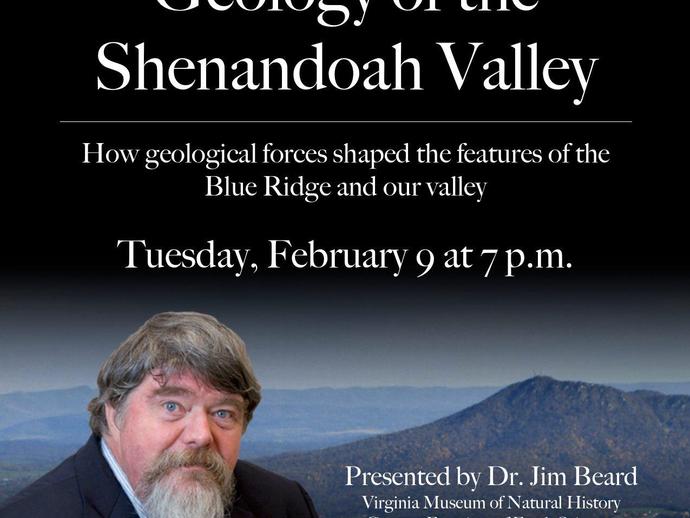
This one is for all of you geology fans out there!
February 1, 2021
This one is for all of you geology fans out there! **Please note that this presentation was originally scheduled to take place at the Wayne Theatre as part of its "Signature Speaker Series", but will now only be available as a live broadcast on the Facebook pages of VMNH and the Wayne Theatre.
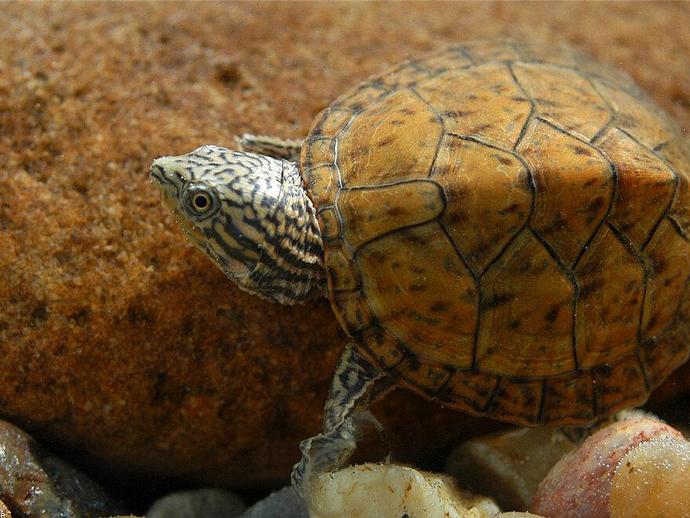
Ben here with today's edition of #BenInNature presented by our friends at Carter Bank & Trust!
February 1, 2021
Ben here with today's edition of #BenInNature presented by our friends at Carter Bank & Trust! The increasingly inaccurately-named Herp Month continues into its fifth week with our countdown of the top five rarest turtles in Virginia! We're kicking things off with our number five pick: Sternotherus minor peltifer, the stripe-necked musk turtle! This turtle is quite small (though not the smallest species in Virginia, which we'll look at later this week), averaging just 3-4 inches in length as an adult! These turtles are completely aquatic and are restricted to rivers and tributaries. Running water seems to be important to their lifestyle and they're not often spotted in ponds. They're mostly carnivorous and seem to prefer ...
Archives
2025
2024
2023
2022
2021
2020
2019
2018
2017
2016
2015
2014
2013
2012
2011
2010
2009
2008

Please Visit Us Soon
Hours:
Tuesday - Saturday: 10am - 4pm
Sunday: Noon to 4pm (Memorial Day Weekend through Labor Day Weekend only)
Monday: Closed
Admission:
$12 for ages 18-59
$6 for ages 3-17, seniors 60+, and college students
FREE for children under 3, museum members, members of ASTC Passport participating institutions, and EBT cardholders
My 4 year old son loves going to the museum. The exhibits are educational, interactive and kid-friendly.
”

 Hours & Admissions
Hours & Admissions Directions
Directions